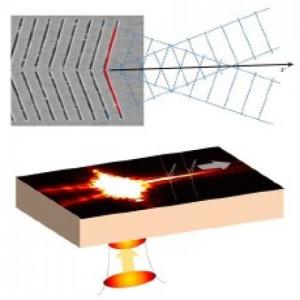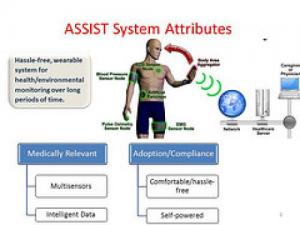Science
Use of Nanotechnology Growing among Iranian Industrialists

Different Iranian industries, including the country's auto-manufacturing companies, are making an increasing use of nanotechnology in their products.
- Read more
- 427 reads
Needle beam could eliminate signal loss in on-chip optics: Harvard researchers create a light wave that propagates without spreading

Top: A micrograph and diagram of the metallic gratings that produce the needle beam. Bottom: An approximation of the experimental setup. A laser is focused from the glass substrate side onto the device. Once the non-diffractive surface wave is created, detailed information on its intensity distribution is gathered using an ultrahigh-spatial-resolution near-field scanning optical microscope.
- Read more
- 436 reads
Rust Never Sleeps: Berkeley Lab-led Observations of Electron Hopping in Iron Oxide Hold Consequences for Environment and Energy

Iron oxide (rust) is a poor electrical conductor, but electrons in iron oxide can use thermal energy to hop from one iron atom to another. A Berkeley Lab experiment has now revealed exactly what happens to electrons after being transferred to an iron oxide particle.
- Read more
- 489 reads
Proteins barge in to turn off unneeded genes and save energy

A few Angstroms make all the difference. The CueR protein binds to DNA at the start of a gene that protects against copper poisoning. When copper atoms bind to CueR, the protein changes shape just enough to twist the DNA - such a small distance that it can't be drawn in two dimensions - to turn on transcription of the gene. When the gene is no longer needed, the original form of CueR unceremoniously kicks the copper-bound form away, turning off transcription quickly to save energy.
- Read more
- 423 reads
$18.5 million NSF grant to develop self-monitoring health devices

A schematic for an unobtrusive, wearable electronic health monitoring system. Penn State is part of a collaborative research effort to create self-powered devices to help people monitor their health.
- Read more
- 493 reads
Dawn has Departed the Giant Asteroid Vesta

This image is from the last sequence of images NASA's Dawn spacecraft obtained of the giant asteroid Vesta, looking down at Vesta's north pole as it was departing.
- Read more
- 453 reads
New Method for Rapid Separation of Uranyl Ions from Aqueous Solutions

The mentioned research group has set its main goal on preparing selective and environmentally friendly adsorbents for fast separation and concentration of uranyl and thorium from aqueous solutions, for quite a while.
- Read more
- 470 reads
Improvement of Photocatalytic Activity of Zinc Oxide

The modification was used in order to increase the photocatalytic activity of the nanocatalyst. The catalysts synthesized through this method can be used cost-effectively at large scale in the purification of textile industry wastewater after more optimization.
- Read more
- 441 reads
NASA's SDO Sees Massive Filament Erupt on Sun

Swirls of green and red appear in an aurora over Whitehorse, Yukon on the night of September 3, 2012. The aurora was due to the interaction of a coronal mass ejection (CME) from the sun with Earth's magnetosphere. The CME left the sun on August 31 and arrived on September 3.
- Read more
- 475 reads
Human Rights
Fostering a More Humane World: The 28th Eurasian Economic Summi

Conscience, Hope, and Action: Keys to Global Peace and Sustainability

Ringing FOWPAL’s Peace Bell for the World:Nobel Peace Prize Laureates’ Visions and Actions

Protecting the World’s Cultural Diversity for a Sustainable Future

Puppet Show I International Friendship Day 2020


